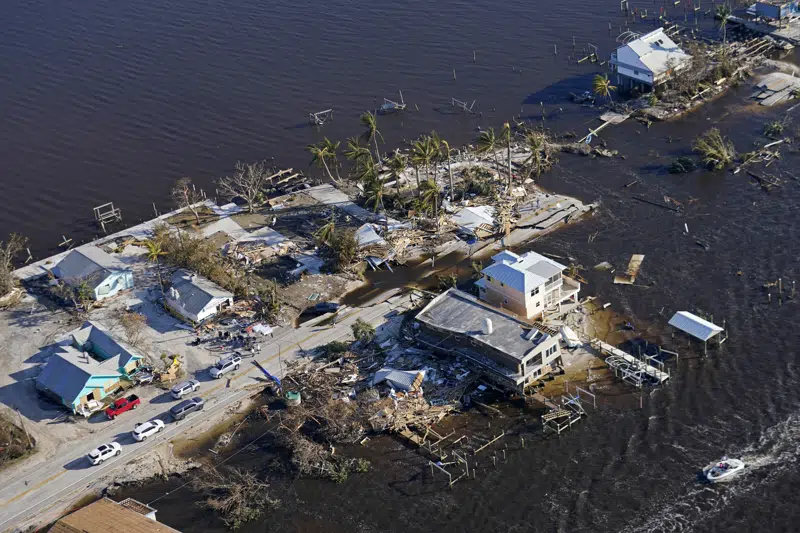
Building code and resiliency requirements are to construction what traffic, signals and stop signs are to drivers.
Without road rules there’s no safety for drivers, passengers and onlookers. Without modernized building codes, structures — whether palatial private residences, entry level homes or municipal buildings — aren’t as safe from hurricanes as they can be.
“That’s just the bottom line. Codes work,” Federal Alliance for Safe Homes (FLASH) president and CEO Leslie Chapman-Henderson said Tuesday at the Florida Chamber’s summit, Insuring Florida’s Future.
FLASH focuses its efforts on strengthening homes and safeguarding families from natural and manmade disasters. Chapman-Henderson said the organization, first created in Florida as a working group following Hurricane Andrew, is promoting the adoption of building codes nationally and stressing that increasing safety features doesn’t make the cost of construction out of reach.
“Building codes are the best moment, the least expensive time, and the easiest path” to mitigate loss and improve safety during a natural disaster, Chapman-Henderson said.
The evidence that building codes work can be seen across Florida communities such as Mexico Beach, which was pummeled by Hurricane Michael in 2018. Chapman-Henderson showed the crowd a picture of a beach home that withstood the Category 5 storm.
Most of the homes in the area, though, were blown off their foundations.
Following Hurricane Michael, FLASH launched Strong Homes, a pilot project in which about 50 homes were rebuilt to meet the gold fortified standards promoted by the Insurance Institute for Business & Home Safety (IIHBS). She said the upgrades to the IIBHS standard resulted in nominal price increases. In return, though, people have a stronger, more insurable home.
Hurricane Ian pummeled Southwest Florida late September, leaving 20,000 homes destroyed or in need of repair.
Chapman-Henderson told the crowd it was an opportunity.
“What we are standing up now is a moonshot for Hurricane Ian recovery. We want every home rebuilt in those six counties in Southwest Florida to meet fortified gold,” she said of the IIBHS standards.
Prior to Ian’s landfall, Chapman-Henderson told media outlets that homes built in Florida post-2002 with the adoption of the statewide building code would withstand the storm better. The University of Florida affirmed her prediction following the storm, telling her there was a “bright red line in building performance and levels of damage pre and post the Andrew error.”
The statewide building code was borne from Hurricane Andrew, which pummeled Homestead in August 1992. Lawmakers 10 years later passed the building code.
But in recent years, the Legislature hasbacked off the code, eliminating a requirement in 2017 that members of the Florida Building Commission must review new safety standards adopted by the International Code Council every three years.
Chapman-Henderson participated in the Now & Then: 30 Years of Florida Resiliency panel at the summit, which was moderated by Meenan P.A. law firm shareholder Joy Ryan. Chapman-Henderson was joined by Roy Wright, president and CEO of IIHBS, and Jenifer Rupert, Regional Resilience Officer for East Central Florida Regional Planning Council.
Wright, who opposed the 2017 revision to the statewide building code pushed by those in the construction industry, told the crowd, “Don’t cut corners, don’t look back.”
The summit comes one week before lawmakers convene in Tallahassee for a Special Session on property insurance, the second Special Session dedicated to homeowners insurance held this year. Insurance companies want lawmakers to tackle a number of legal issues related to homeowners insurance, including a long-standing law that requires insurance companies that have judgments against them or settlement agreements struck to pick up the costs of a plaintiff’s attorneys fees.
Meanwhile, resilience has become a top priority for the East Central Florida Regional Planning Council which represents Brevard, Lake, Marion, Orange, Osceola, Seminole, Sumter and Volusia counties. And in the wake of the back-to-back landfall of Hurricane Ian and Hurricane Nicole, some of those local governments are reconsidering ways to ensure the safety of their residents.
A recent analysis conducted on behalf of the council showed that a whopping 41% of subsidized housing options in Volusia and Brevard County have at least one flood hazard that needs to be managed, according to Rupert, who heads the resiliency efforts for the council.
Inland in Seminole and Osceola counties, 26% of total housing stock has flood hazards that need mitigating, she said, adding that there are “several hundred” other properties in those counties that are in flood zones.
Rupert told the crowd that erosion caused by two hurricanes caused sections of A1A to collapse. Part of the roadway collapsed in 2016 following Hurricane Matthew in 2016. Fifty million dollars, she said, was spent rebuilding the road.
“Do we reinvest and rebuild a road for six years for a return on that investment? It’s a difficult question to juggle but it’s where I think a lot of local governments are sitting today.”



